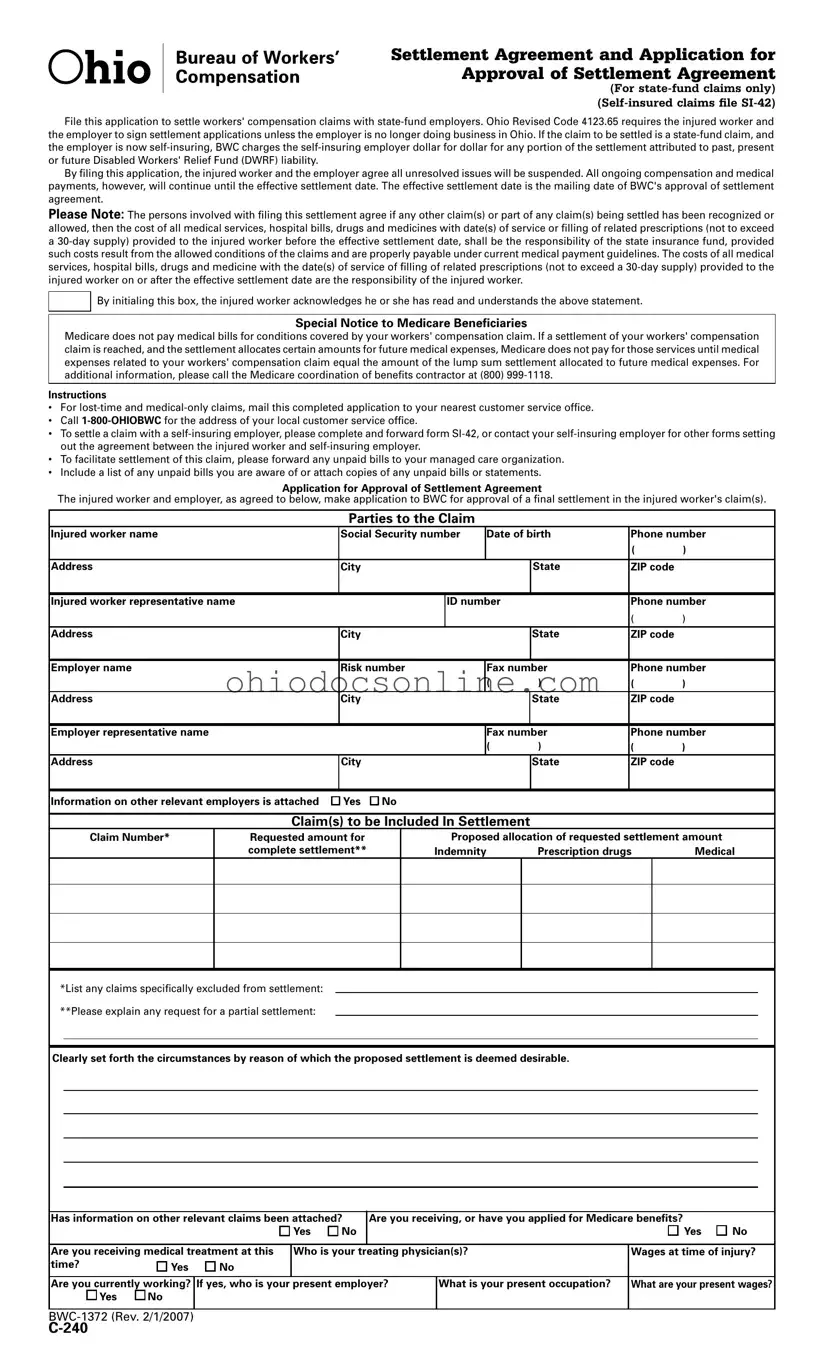Ohio C 240 Template in PDF
The Ohio C 240 form is a crucial document known as the Settlement Agreement and Application for Approval of Settlement Agreement, specifically designed for state-fund workers' compensation claims. This form facilitates the settlement process between injured workers and their employers, ensuring that both parties agree to the terms of the settlement. It is essential for both the injured worker and employer to understand their responsibilities outlined in this form, particularly regarding ongoing medical expenses and the implications of Medicare coverage.
Open Editor
